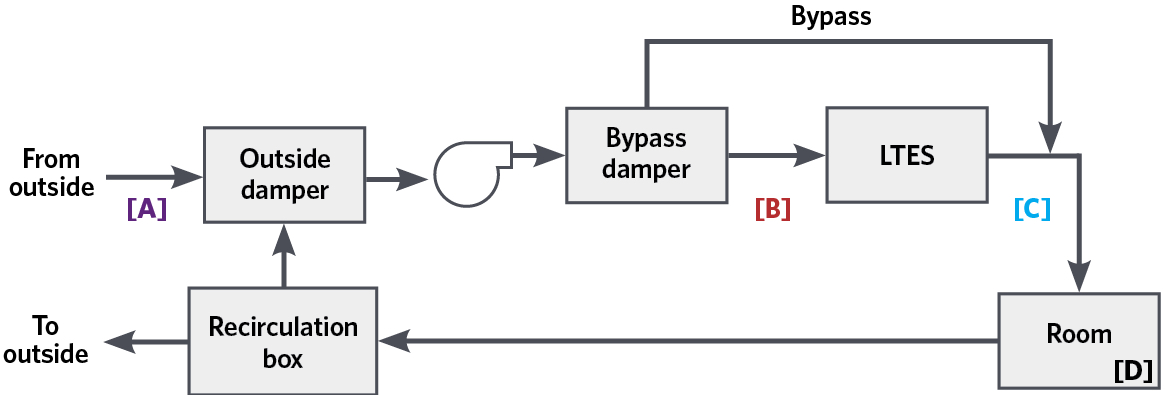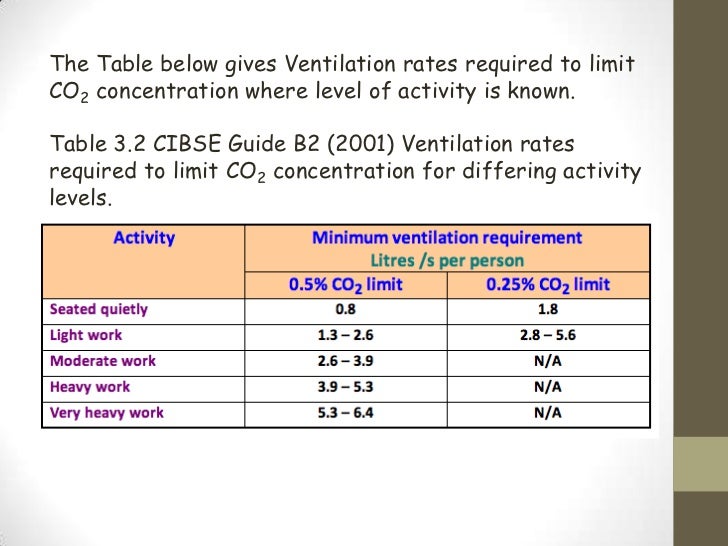Cibse Guide To Ventilation
Effective ventilation is fundamental to the provision of a. Determine required ventilation rates to dilute airborne. 8 (l/s)/person (CIBSE Guide A). Revision of CIBSE Guide B – Sections 2, 3 and 12 Ventilation, Air Conditioning and Acoustics: Why are we doing this? CIBSE Guides are the authoritative source of guidance for the design of building services in the UK, being used by over 80% of UK designers. CIBSE have published (in 2016) a series of Guides in their “B” Series of which “B2” is of direct interest to those dealing in Industrial Ventilation/LEV.
GVB2/16 CIBSE Guide B2: Ventilation and Ductwork 2016 Guide B provides guidance on the practical design of heating, ventilation and air conditioning systems. It represents a consensus on what constitutes relevant good practice guidance. This has developed over more than 70 years, with the Steering Groups for each edition of the Guide expanding and pruning the content to reflect the evolution of technology and priorities. Since the last edition of Guide B in 2005, the European Energy Performance of Buildings Directive has been introduced. This requires national building energy regulations to be based on calculations that integrate the impact of the building envelope and the building services systems, formalising what was already recognised as good design practice.
Cibse Guide For Ventilation
In addition, the use of voluntary energy efficiency and sustainability indicators has increased. These changes have influenced the content of Guide B, but the emphasis remains on system design. Corridenda (May 2018) A Corrigenda has been issued making corrections to the following pages: 2-16, 2-19, 2-21, 2-22, 2-32, 2-33, 2-35, 2-38, 2-43, 2-44 and 2-59 (and dated 15 May 2018).
This guide is not intended to replace the BDI-2. Examiner's Manual (Newborg, 2005). A thorough understanding of the information in the Examiner's. Battelle Developmental Inventory (BDI-2) Examiner's Manual. Grades: Toddler-2; Product Category: Clinical & Special Needs, Early Childhood, Assessment,. Bdi 2 examiners manual. Buy Battelle Developmental Inventory (BDI-2) Examiner's Manual, ISBN: 005 from Houghton Mifflin Harcourt.
The Corrigenda itself can be downloaded. Purchasers of the hard copy will receive this with the book and it will be incorporated in a reprint at the earliest opportunity. The pdf of the Guide downloadable using the button above will be corrected with these changes and clearly identified as such. Structure of the Guide Guide B deals with systems to provide heating, ventilation and air conditioning services, and is divided into several chapters which are published separately.
It will usually be necessary to refer to several – perhaps all – chapters since decisions based on one service will commonly affect the provision of others. These are, with links as appropriate: focuses on how different types of building and different activities within buildings influence the choice of system. This chapter is not available in printed form, but can be downloaded from the CIBSE website. For many activities and types of building, more detailed design information is available in specialist guidance. Chapters B1 to B4 address issues relating to specific services. There are usually several possible design solutions to any situation, and the Guide does not attempt to be prescriptive but rather to highlight the strengths and weaknesses of different options., including hot water systems and an appendix on hydronic systems, which is also applicable to chilled water systems.

B2: Ventilation and ductwork. (applicable to all systems) Note: Another Section of Guide B, designated as Guide B0: Applications and Activities:HVAC Strategies for Building is available in pdf format only but as a free download from. In addition, a Combined Index to Parts B1 to B4 can be found and freely downloaded The 4 hard copy volumes of Guide B are available to purchase as a set at a discounted price. Guide B2 Ventilation and ductwork Ventilation is the process by which fresh air is provided to occupants and concentrations of potentially harmful pollutants are diluted and removed from a space.


It is also used to cool a space and as a mechanism to distribute thermally conditioned air for heating and cooling. It is a fundamental component of building services design since it plays a major role in the comfort, health and productivity of occupants. In addition, ventilation can contribute significantly to a building’s energy load and, in some cases, can account for 50 per cent or more of total heating or cooling loss.
Cibse Guide Toilet Ventilation
To stem energy loss from uncontrolled air change there is growing demand for airtightness combined with demandcontrolled ventilation and heat recovery. In large buildings, the ventilation system can be extremely complex and is invariably integrated with the heating and cooling system. Hence there is a strong connection between ventilation, heating and cooling systems, building envelope, fire protection and structural design issues. This impinges on the wholelife costs and performance of buildings. Since building services are required to operate throughout the life of the building, their operating costs are a very significant element of the wholelife costs of the system. For all these reasons, there is a need for uptodate guidance on the design of ventilation systems.
The overall process of design development, from the initial outline design through to system selection and detailed equipment specification, is summarised schematically in Figure 2.1. Cooling systems are separately covered by CIBSE Guide B3 (2016) and heating systems are covered in CIBSE Guide B1 (2016). This document, which forms chapter 2 of CIBSE Guide B, is intended to be used by practising designers who hold a basic knowledge of the fundamentals of building physics and building services engineering.